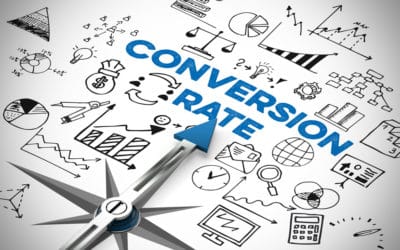5 tips to increase sales for your online store
Whether you run a dedicated ecommerce site or have a simple online store as part of your business page, there’s one thing you could always use more of: traffic and sales.
And with ever more competition out there, aiming to continuously improve the experience your customers have with your platform should be a priority. Here are five simple but crucial steps to increase your revenue.
1. Conduct an SEO audit
No matter how good your products are, people can’t buy them if they can’t find your website. That’s where Search Engine Optimisation (SEO) comes in. The easier you make it for search engines to understand what your website’s all about, the more likely you are to show up in search results when someone’s looking for what you offer.
An SEO audit it a great place to start. Aside from revisiting and updating your keyword strategy, there are a number of other factors to consider. These include:
- Making sure there aren’t technical issues like broken links which could be harming your ranking
- Increasing site speed and responsiveness
- Mobile friendliness
- Security
- Title tags and meta descriptions
2. Make it easy for your customers to communicate with you in real time
If a customer has a question about one of your products, can they reach you straight away? Or do they have to wait for you to reply to an email, or worse – wait until business hours the following morning to get you on the phone?
In fact, 53% of customers will abandon their online purchase if they can’t find immediate answers to their questions. That’s why having a live chat service which is available 24/7 can make a huge difference to your conversion rate – especially if you’re targeting customers from multiple time zones.
Another point to consider is being available on the platforms your target market already spends time on – namely social media. Make sure you’ve got profiles on the channels they use most, and that you’re instantly alerted when someone interacts with your brand.
3. Improve the user experience (UX) for your site
Just like in a physical retail store, customers are likely to purchase less (or even nothing at all) if they can’t easily find what they’re looking for. There’s a reason that ecommerce giants like Amazon and eBay got so successful in the first place – all their millions of products are well categorized, and it’s easy to navigate up or down a level.
Make use of ample white space to prevent your pages looking cluttered, and ensure customers can navigate to frequently accessed pages (like your contact page) with a single click.
If you have pages which tend to have a high bounce rate, find out why you’re losing sales at this particular point. It’s highly likely that there’s something about the page that’s not user-friendly, or even downright confusing.
4. Aim to educate, not just sell
Adding valuable resources like blog posts, product comparisons, top 10 lists and articles isn’t just good for SEO, it helps build trust with your potential customers and grow your online reputation too. Both search engines and humans respond better to websites that are treasure troves of valuable information.
And the more content there is on your website, the better the chances you’ll end up ranking for specific search queries. Having provided the info the consumer is looking for, they’re a lot more likely to stay on your page and make a purchase.
Remember that every time a potential customer asks a question, you’ve been handed an opportunity to create useful content to add to your site!
5. Invest in great product images
Would you buy something without knowing what it looked like? Probably not.
The bar has been raised, and modern consumers expect highly professional photos that let them know exactly what they’re purchasing. Because they can’t actually touch and examine the product online, your photos are the only indication they have (other than reviews from other customers, of course) of the quality of the item they’re interested in.
This presents a bit of a problem, as very high-quality images usually mean large file sizes – and that can slow down your website’s loading speed. Thankfully, this issue can be overcome using the right image compression techniques – your pictures still look great, but they won’t cause your pages to lag.
In conclusion
- eCommerce is a highly competitive industry, and you’ll need to keep making tweaks and improvements over time if you want to grow.
- Online consumers hate waiting for feedback to queries. If you haven’t invested in live chat support yet, make it a top priority.
- Make your website more than just an online store – make it a place your target audience can find useful information to solve their problems.
- The look and feel of your online store are important, but always keep functionality, navigability, and user friendliness top of mind too.



